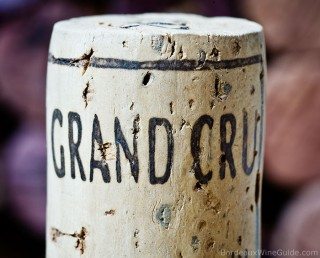 Let’s not debate the greatness of the 2009 Bordeaux vintage as the top wines make their way to US markets. For now, squelch all lamentations over price inflation for first and second growths on the heels of their runaway futures market. Turn a blind eye to Parker’s very recent The Empire Strikes Back article where he wrote “this is unquestionably the greatest Bordeaux vintage I have ever tasted.” Forget accusations of point inflation contributing to his 100-point awards for 18 different wines. Turn your back on naysayers claiming high extraction alcoholic wines. The noise has been deafening and, frankly, silly. It’s simply time to bring on the wines.
Let’s not debate the greatness of the 2009 Bordeaux vintage as the top wines make their way to US markets. For now, squelch all lamentations over price inflation for first and second growths on the heels of their runaway futures market. Turn a blind eye to Parker’s very recent The Empire Strikes Back article where he wrote “this is unquestionably the greatest Bordeaux vintage I have ever tasted.” Forget accusations of point inflation contributing to his 100-point awards for 18 different wines. Turn your back on naysayers claiming high extraction alcoholic wines. The noise has been deafening and, frankly, silly. It’s simply time to bring on the wines.
I remember 1982 Bordeaux vintage press coverage when Parker’s level of influence wasn’t worthy of criticism….yet. There weren’t enough wine geeks following him back then to kick up even a small dust cloud if they had tried. It will be a sad day when I drink my last bottle of 1982 from the very Bordeaux vintage that put Parker on the map. I guess if he was 60 years old in the early 1980’s and had already claimed eight or ten vintages “best ever” leading up to 1982, he might have been roughed up gangland style, just like today, for overstatement and hype. The fact is those wines are some of the greatest I have ever tasted (woops, there I go now)….ever. So let’s just all agree that 2009 is probably a really, really good vintage; possibly uneven like most, but a birth year with more than its fair share of wines that claret fans will covet for their cellars.
Then take one more step. If it was a very, very good year with ideal growing conditions, then some lesser known chateaux just might have produced outstanding wines. Maybe they won’t even be as extracted, alcoholic, nor fruit dominant as the top scoring wines that are becoming increasingly offensive to the lynch mob’s palates. If this is the case, there just might be a consumer strategy for buying 2009 Bordeaux that makes financial and drinking sense. Plus (especially for 50+ year old guys like me that won’t be around to know what happens to these wines in 35+ years) they might offer shorter term cellaring and maturation windows of 8-20 years.
 This is all a guess before any comprehensive tasting, but I intend to learn as much as I can about the potential for some of those wines. In late April, we will hold a Boston Group blind tasting of less heralded chateaux and regional 2009 Bordeaux outliers; none priced higher than $33 on the retail market. I have only tasted one of these wines so far; a Fronsac by Chateau Arnauton. Parker downgraded this basic cuvee from 90-92 points in April of 2010 to 88 points in February of this year.
This is all a guess before any comprehensive tasting, but I intend to learn as much as I can about the potential for some of those wines. In late April, we will hold a Boston Group blind tasting of less heralded chateaux and regional 2009 Bordeaux outliers; none priced higher than $33 on the retail market. I have only tasted one of these wines so far; a Fronsac by Chateau Arnauton. Parker downgraded this basic cuvee from 90-92 points in April of 2010 to 88 points in February of this year.
My own take on the Arnauton is that it’s a beautiful wine, despite 14.5% alcohol, with sweet elegance, pure berry high tones, more than manageable extraction, exciting freshness, tight balance, and (while drinking extremely capably now) definite cellar potential. I paid $16 for that bottle, as well as the eleven others sitting in my cellar; very pretty Bordeaux.
I don’t know about the others, but here is a laundry list of the wines I organized for our April tasting. Each one is now available for prices ranging $15-$33 in either the NY or Boston markets:
- La Vieille Cure- $29
- Villars- $19
- Fontenil- $33
- du Glana- $28
- Roc- $23
- Vrai Canon Bouche – $30
- d’Aiguilhe – $28
- Senejac – $28
- Bernadotte – $32
- Arnauton – $16
- Boutisse – $25
- Bouscat Cadus – $15
Be sure to come back the first week of May to check out our learning about these wines. If they’re good, it will be simple to build a consumer strategy to displace all the debate. For sure, it would be much easier on all our ears, eyes, and palates.